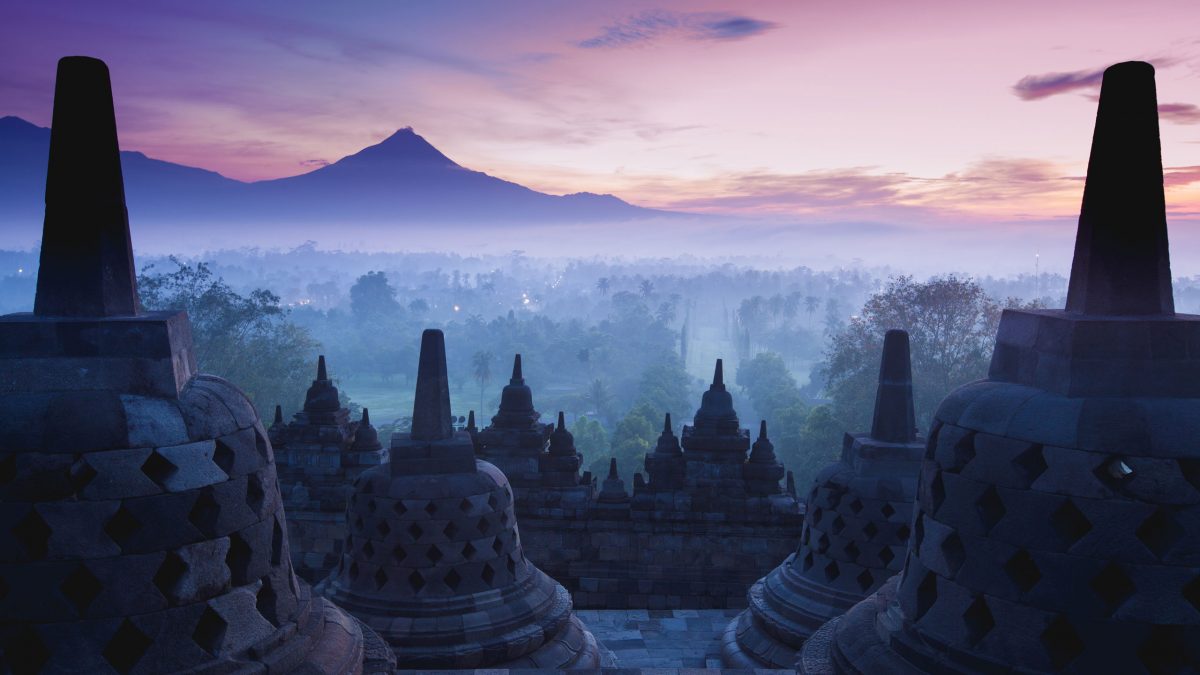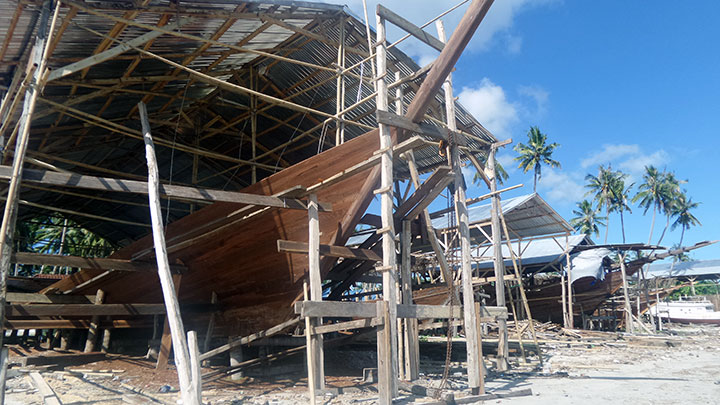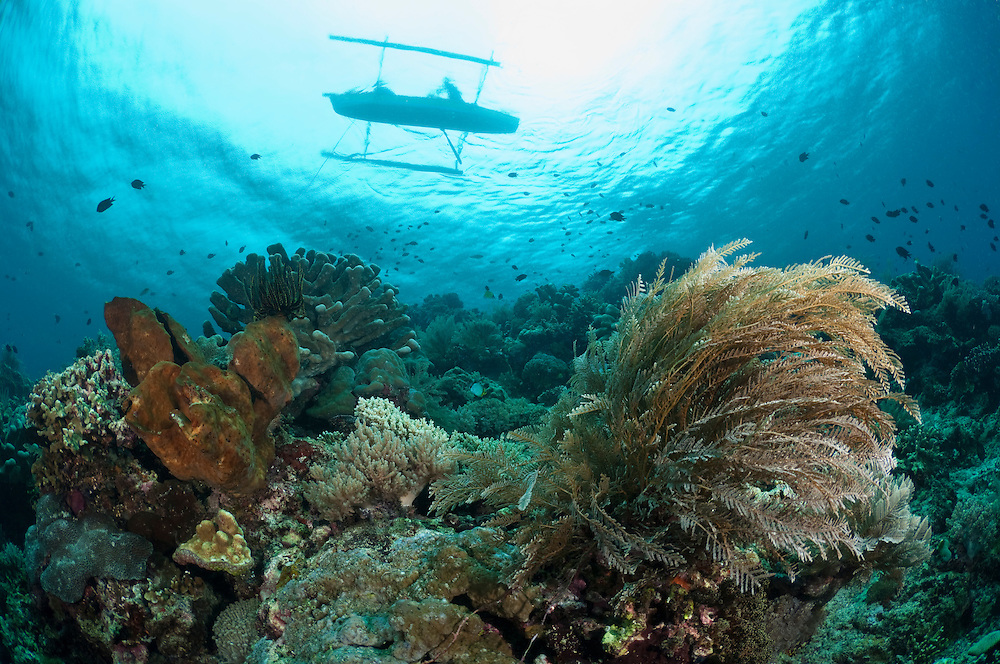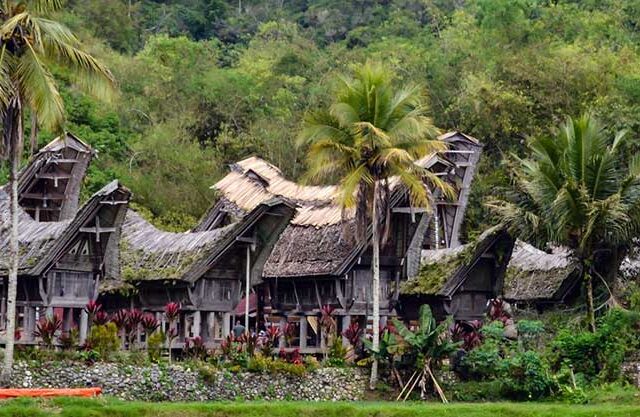Traditional architecture from Sulawesi share several classical brands, which can also be found in other places in the archipelago. Pile dwellings with saddle-shaped roofs and outward tips, and mural decorations in the form of crossed horns, are widespread over the islands of Southeast-Asia. The imposant form of the Toraja-houses, with their bamboo roofs with wave upward, are clearly related to the constructions of the Toba Batak and Minangkabau on Sumatera.
Enscriptions on Dongson drums from the Bronze Age (around 500 B.C. until 100 A.D.) made on mainland Southeast-Asia and Indonesia, show similar houses and roofs. This are the earliest known images of this kind of buildings, but the style is probably a lot older. But the influence of the Dongson culture, which got much attention from architects earlier, was probably to fragmentaric and to scattered to declare the spread of an architectonic construction.
The same style of building can be found further away in Micronesia, an area that didn’t get contact with the Dongson culture during the Bronze Age. New Guinee also has it’s own design of the saddle roof. This all leads to the conclusion that this unique style of building houses came from the early austronesian colonists. Their migrationf over the islands of Indonesia and the Pacific from the mainland of Southeast Asia started about 6,000 years ago.
Pile dwellings
Almost everywhere in Indonesia pile dwellings can be found: the walls of the Borobudur, dating from the 8th century, shows houses on piles, however a shortage of wood on Jawa and Bali caused houses to be built directly on the ground in the following centuries. On Sulawesi however, this way of construction is preferred, however masonry houses in Jawanese style start to appear. Pile dwellings are remarkably cool because of the very good ventilation under the floor and offer protection against heavy rains, animals and robberies.
The second kind of fundamental structure, in which heavy logs support eachother in a corner, was characteristic to Central-Sulawesi and was also used in an older and almost gone style of the Sa’dan Toraja houses. This style seems to be classic: it’s imaged on a South-Chinese drum from the Bronze Age. The instrument shows people which store wheat in two sheds with crossed logs.
The Buginese house as microcosmos
Little is kept from the older Buginese architectonical style, mainly because many houses were destroyed in the rumourous 1950’s. Older houses were associated with pagan habits by the then islamic fundamentalists. Formerly there used to be at least three styles, each with it’s own roof-shape: straight, round or saddle. Nowadays a typical Buginese house has a straight roof, which often ends in two raised tips. This can be extentions of the normal roof, sometimes with decorations.
Like elsewhere in Indonesia the house is symbolically devided into three levels: the space under the house – for animals and kichen-trash – , the floor where the people live and the room of the roof, where the heirlooms are kept. These three levels correspondent with the three levels in Austronesian cosmologies.
Communal houses in the north
Many populations of Sulawesi used to live in huge houses, in which several families lives. They were built on heavy piles and had steep roofs to arrange the irrigation of the downpoors. The typical communal house consisted of a wide central room, which gave acces to two to upto as much as five separate rooms. Up to ten families could live there, each with their own fire and rice storage. This typical house has long since disappeared however; the style which is ‘traditional’ in Minahasa nowadays, was only developed in the 19th century.
Spectacular Toraja houses
In the highlands of Sulawesi, north of Tana Toraja, some populations built also houses for several families. The To Maki still do it. In Central-Sulawesi there were several styles in the first decades of the 20th century, mostly with steep roof; the tips of the roof were often decorated with woodcarvings. East of Poso you could find several types of temples (lobo) from a traditional religion. The arrival of the Salvation Army did bring much change; none of these constructions has been left.
The most vital and spectactular architectural tradition which is still much used is without doubt that of the Sa’dan Toraja. The nobility still buids magnificent saddle roofs, covered with panels which are painted red, white, black and yellow and are decorated with woodcarvings. New houses have an even bigger extention of the tip of the roof, in which the edge ends in a sharp point. This style, which is now common, used to be characteristic only fot the area around Rantepao. The still kept houses have much more short tip and are also much smaller. Lumberjacks which build these houses nowadays mainly live in Rantepao. This has also lead to a certain standardisation in the patterns of the woodcarving on the wall-panels.
At the end of the 1960’s the economical growth in Tana Toraja seems to have turned around the downfall of these buildings. They are seen as an important indication of the social level of a family and as the essential place for performing ceremonies. The new wealth starts to break down the traditional social hierarchies; people that were not allowed to build big houses, can now, due to all regulations, build impressive houses themselves. Much of the money that is used for rebuilding houses, comes from wealthy migrants, which want to raise the prestige of their family.












